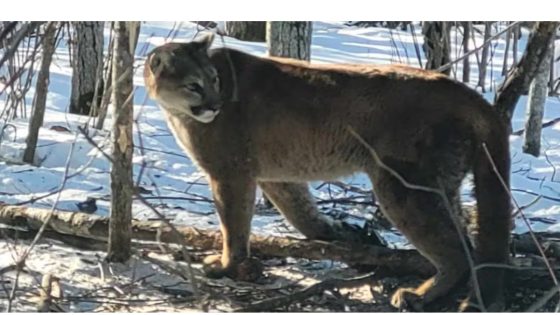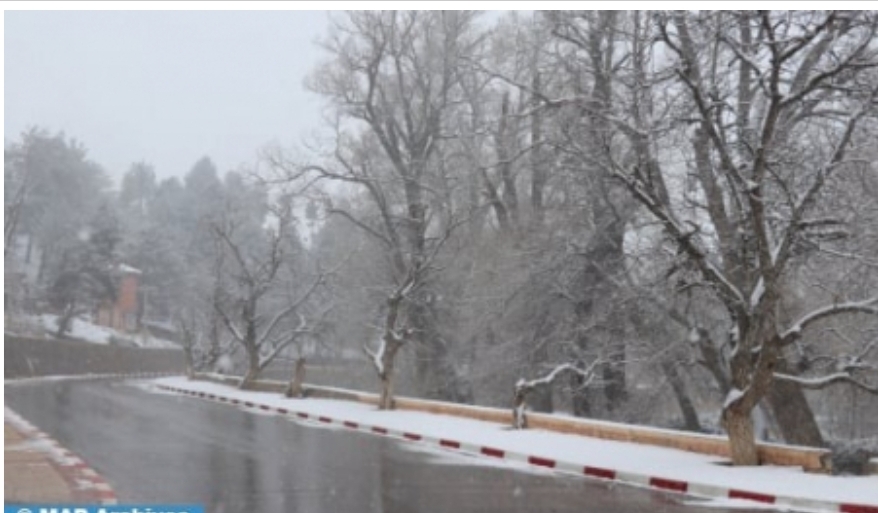Assahafa.com
A Swan Valley-area trapper checking his line a few weeks ago stumbled upon a remarkable catch: the first cougar that’s ever been captured alive in Manitoba.
Clint Janzen was driving down a trail when he spotted the big cat in a trap just off to the side of the path.
“I had a coyote that I had caught that was dead and half ate up, which is abnormal, because a leg hold trap just holds it,” he said.
“I just assumed that the wolves had killed the coyote and ate it, so I … reset the trap on a wolf trail by it, and lo and behold, the next day I had a cougar.”
Janzen reported his find to Manitoba Conservation officers, who tranquilized the cougar, took measurements and hair and blood samples, and released it with a radio collar.
Janzen said the cougar was likely the animal that ate the coyote.
The Minitonas-based trapper — who has been trapping since he was eight years old — said he does a lot of problem predator control, but he’s never even spotted a cougar before.
“As a trapper, I know they’re there. I moved to the Valley here in the early ’90s, and I saw cougar tracks way back then,” he said. “Cougars have been here for many, many years. We just don’t see them.”
Confirmed cougar sightings in Manitoba are “extremely rare,” provincial officials said in a Friday statement sent to CBC, confirming that this is the first time a cougar has ever been captured alive in the province.
The majority of sightings happen in western parts of Manitoba like Riding Mountain, Duck Mountain and Porcupine Hills, the province said.
‘It gave a few growls’
The big cat Janzen caught is a female, likely not full grown yet. It was five feet, nine inches (about 1.75 metres) long from its head to the tip of its tail, which the province said is below the average size for adult female cougars.
“It looked huge, but actually it ended up being about just over 80 pounds [about 36 kilograms],” Janzen said. “It wanted to get away, of course — it doesn’t want nothing to do with humans — so it gave a few growls and stuff like that.”
The province also said cougars generally avoid humans, and offers more information on how people can coexist with the animals on its website.
Officials said the samples taken from the cougar have been sent to the Assiniboine Park Zoo for DNA analysis, which keeps a small dataset of samples collected from other cougars in the province.
“This incident presented a unique opportunity to learn more about the movement and habits of these elusive animals, especially because this is a female,” the province said.
The radio collar attached to the cougar “will transmit location information twice a day, which, over time will reveal significant information about the individual’s movement patterns and could provide evidence of breeding.”
Cougars may be becoming more common in Manitoba
Stephen Petersen, the Assiniboine Zoo’s director of conservation and research, said the rare encounter may end up revealing a lot about the cougar population in the province.
“Cougars have been expanding their range back into places they’ve been pushed out of hundreds of years ago, and Manitoba is kind of on the edge of that,” Petersen said.
“We want to know where they’re coming from. We want to know if they’re breeding.”
One way to determine that is looking at genetic samples from cougars, he said.
“Are they related to each other?”
Janzen said he’s happy he found a way to contribute to science — even if accidentally.
“I guess it was a pretty good, big deal for the government, because they’ve never had an opportunity to actually track a cougar to see if they stay in Manitoba or if they just travel through or what,” he said.
“It was an awesome experience.”
Manitoba’s Wildlife Branch keeps a database of confirmed cougar sightings. Any video or photo evidence of sightings should be sent to local conservation officers, the province said.
Source: cbc














